Market Report: Biltmore Industries
What often begins with a smattering of local interest can sometimes turn into an area that attracts interest from collectors across the country. Last week’s market report on Dedham Pottery is a perfect example of once just a Boston-area collectible that later turned into a nationally sought art pottery.
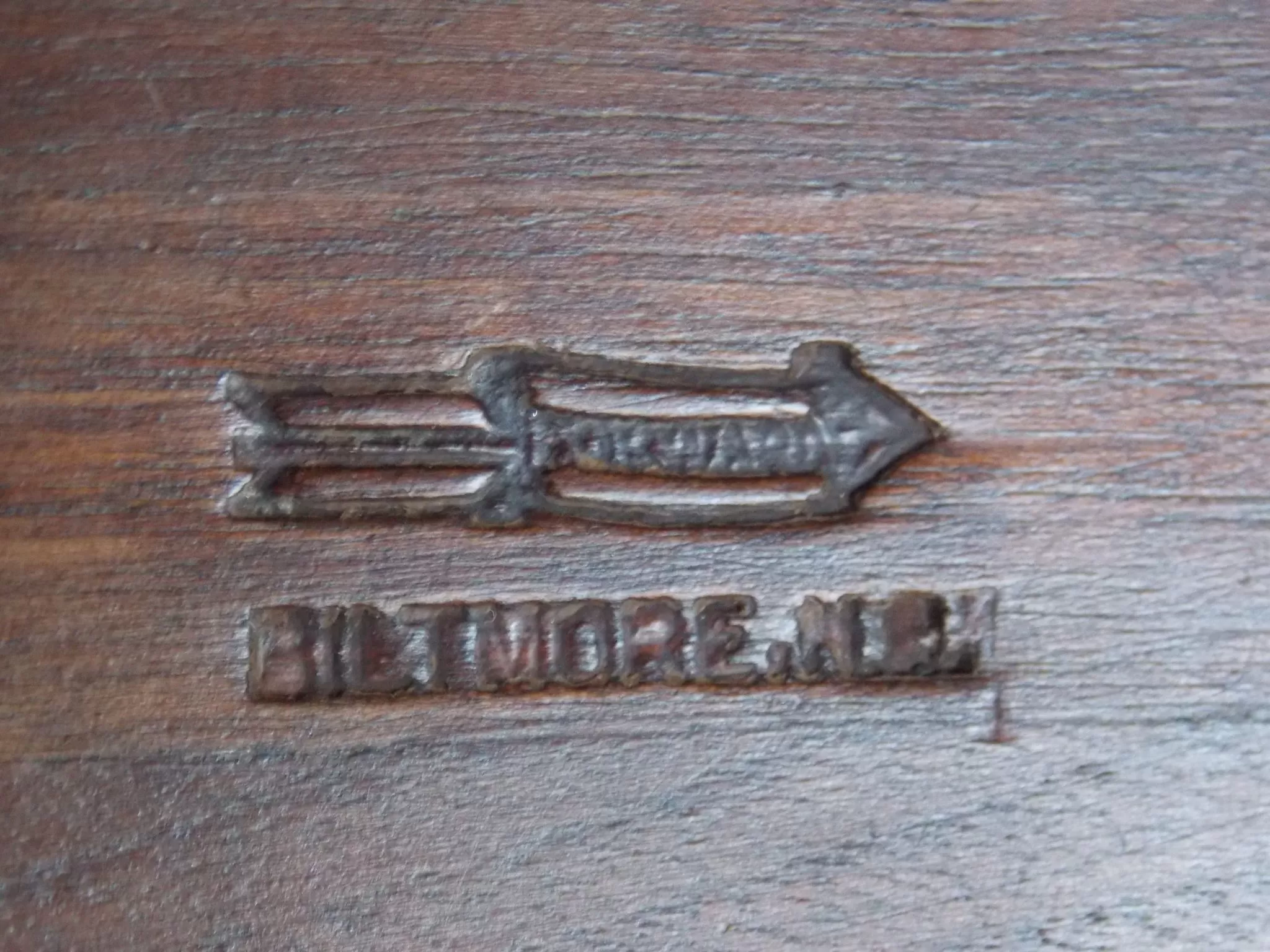
For years Asheville-area Arts and Crafts collectors have been picking up examples of hand-carved bookends, picture frames, glove boxes, bowls, hearth brushes, serving trays, and fireplace bellows bearing the Biltmore, NC brand with a furled banner and the word “Forward” inside it. In most cases they sold for less than a hundred dollars, despite the obvious connection with the Arts and Crafts movement and the ample evidence of fine craftsmanship in the carved dogwood petals, grape leaves, or monogram initials.
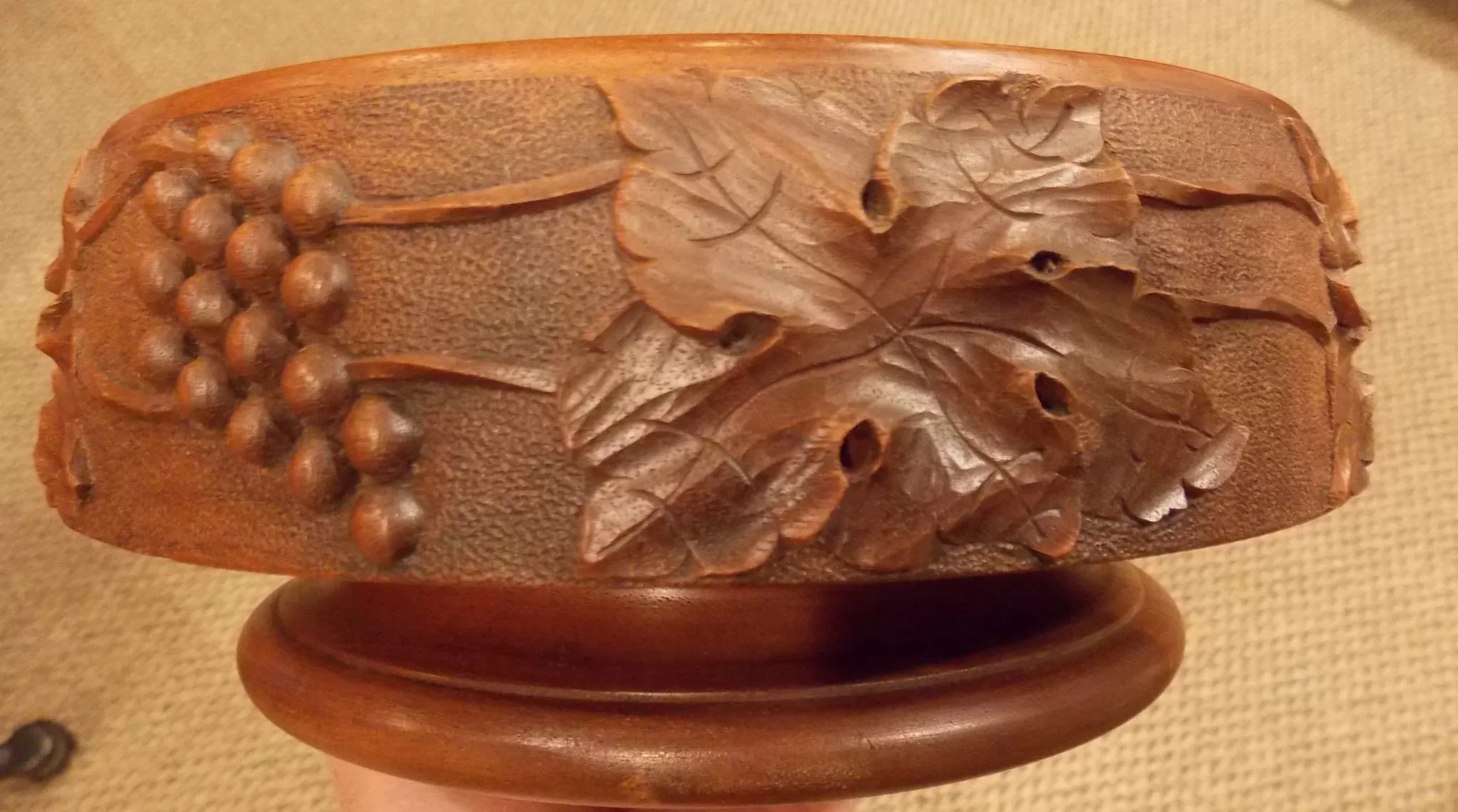
In recent months, however, fine examples have shown up at auction houses on both the East and West Coasts, as well as online. Given this stamp of approval, collectors living outside of North Carolina have joined in the search for additional examples of Biltmore Industries work.
This manual arts cottage industry was formed in 1905 near Asheville by Eleanor Vance and Charlotte Yale and financed by George and Edith Vanderbilt. On rare occasions a carved piece of Biltmore Industries furniture will surface, but the vast majority of their work consisted of smaller items intended to be sold to the growing tourist trade in Asheville. To make it easier for us, nearly every piece was branded with either the mark described above or, after 1916 one bearing the words “Hand Made and Hand Carved in Biltmore Industries, Asheville, NC.
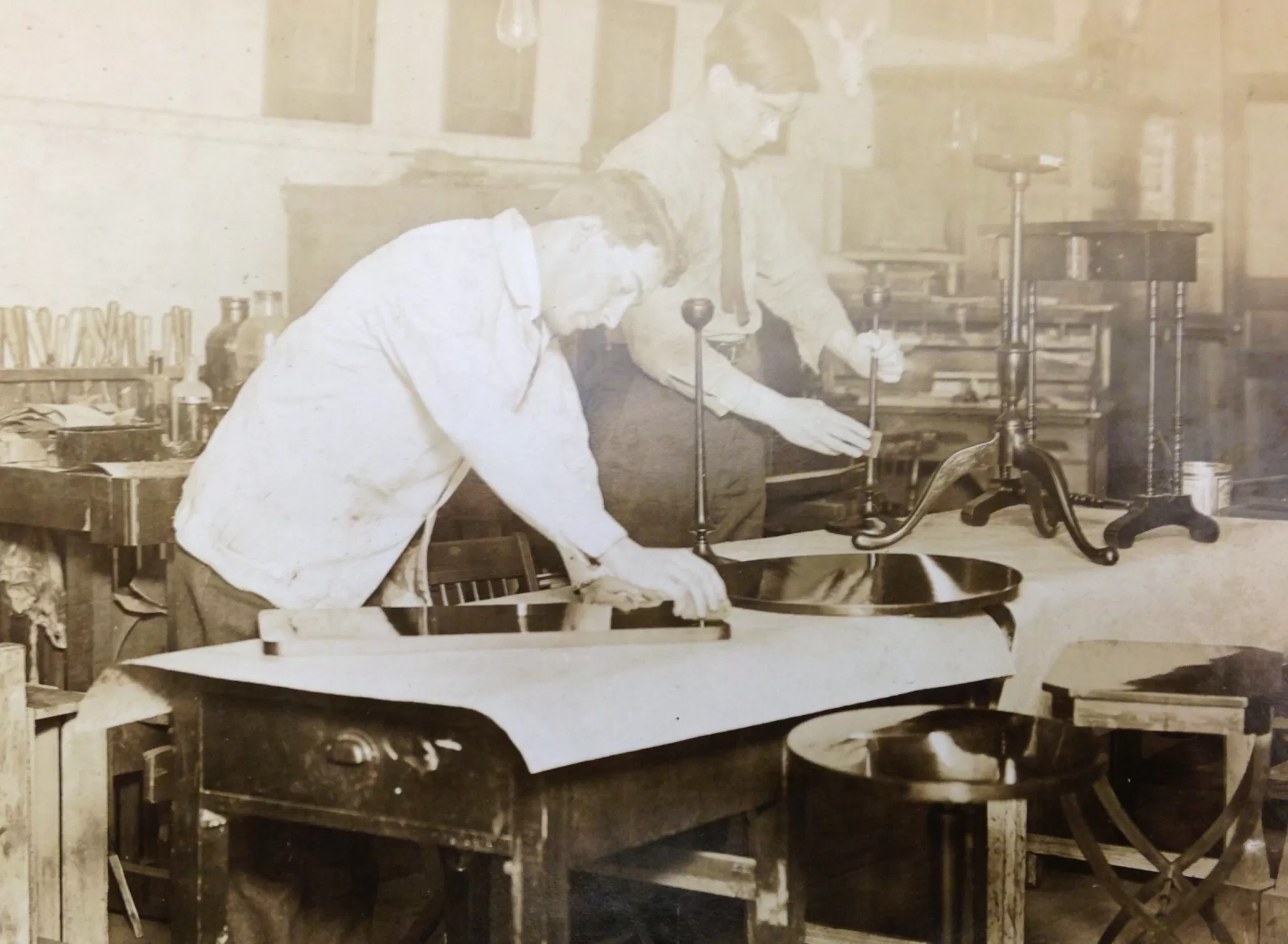
Among the most sought after are the 8″ x 3″ carved walnut bowls. Those with a circular foot and deep, detailed carved leaves, vines, blossoms, or fruit can now soar past $500 (see picture above). Hearth brushes (pictured below in his hand) and fireplace bellows are slightly less sought after, in part because bristles are often missing or the leather bellows split. But when in excellent condition, they will rival bowls in pricing.
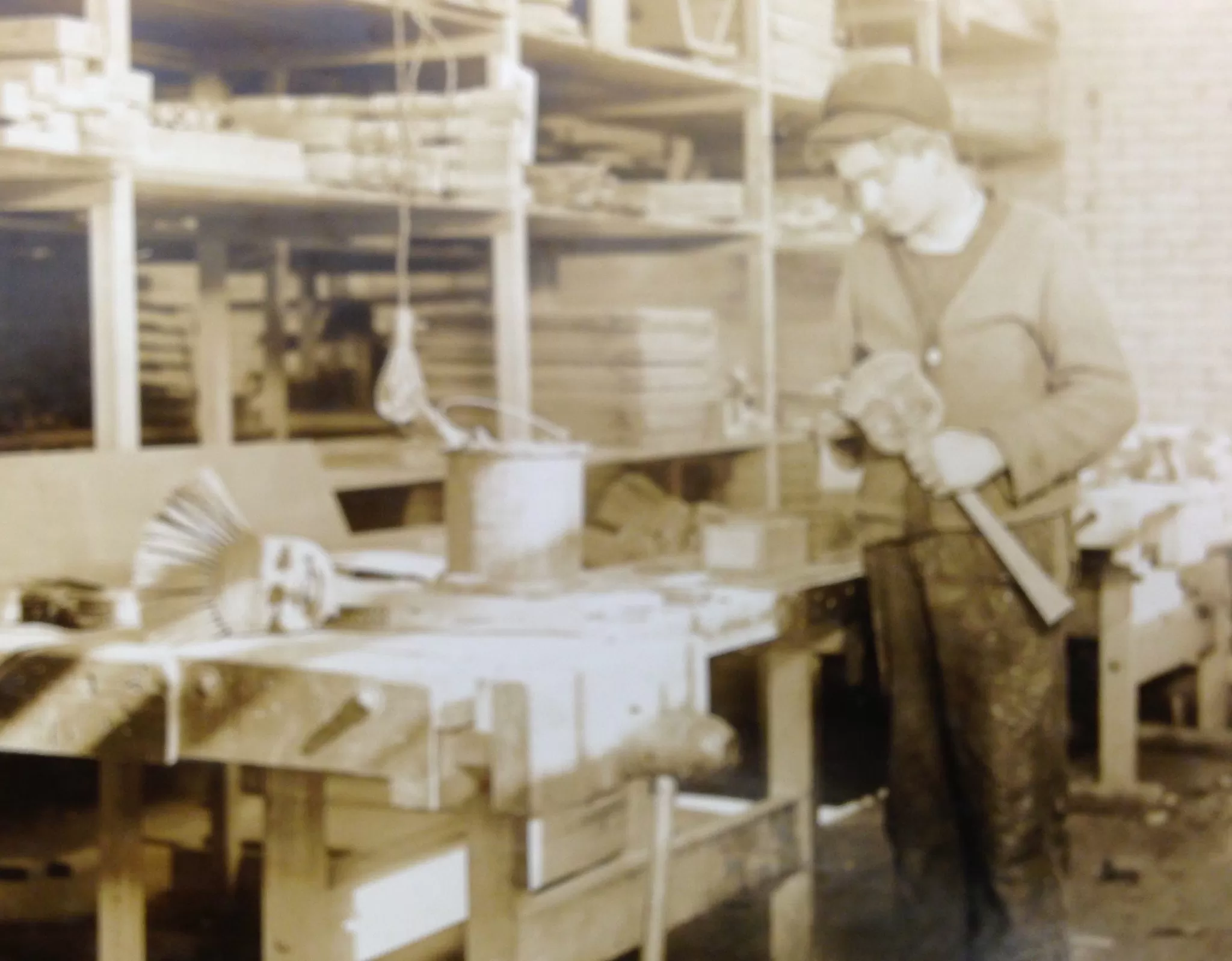
Glove boxes with fully carved lids are also very desirable. Large serving trays fall into the $200-$400 range, again depending on condition and the amount of carving evident. At the bottom of the scale are monogram bookends (below, left) bearing only initials, as these were often done by the less experienced carvers. Bookends with fine carvings, such as the dogwood bookend on the right, will always be in demand. Picture frames, while intricately carved, sometimes fail to attract spirited bidding, especially if very small. In this category, size does seem to matter.
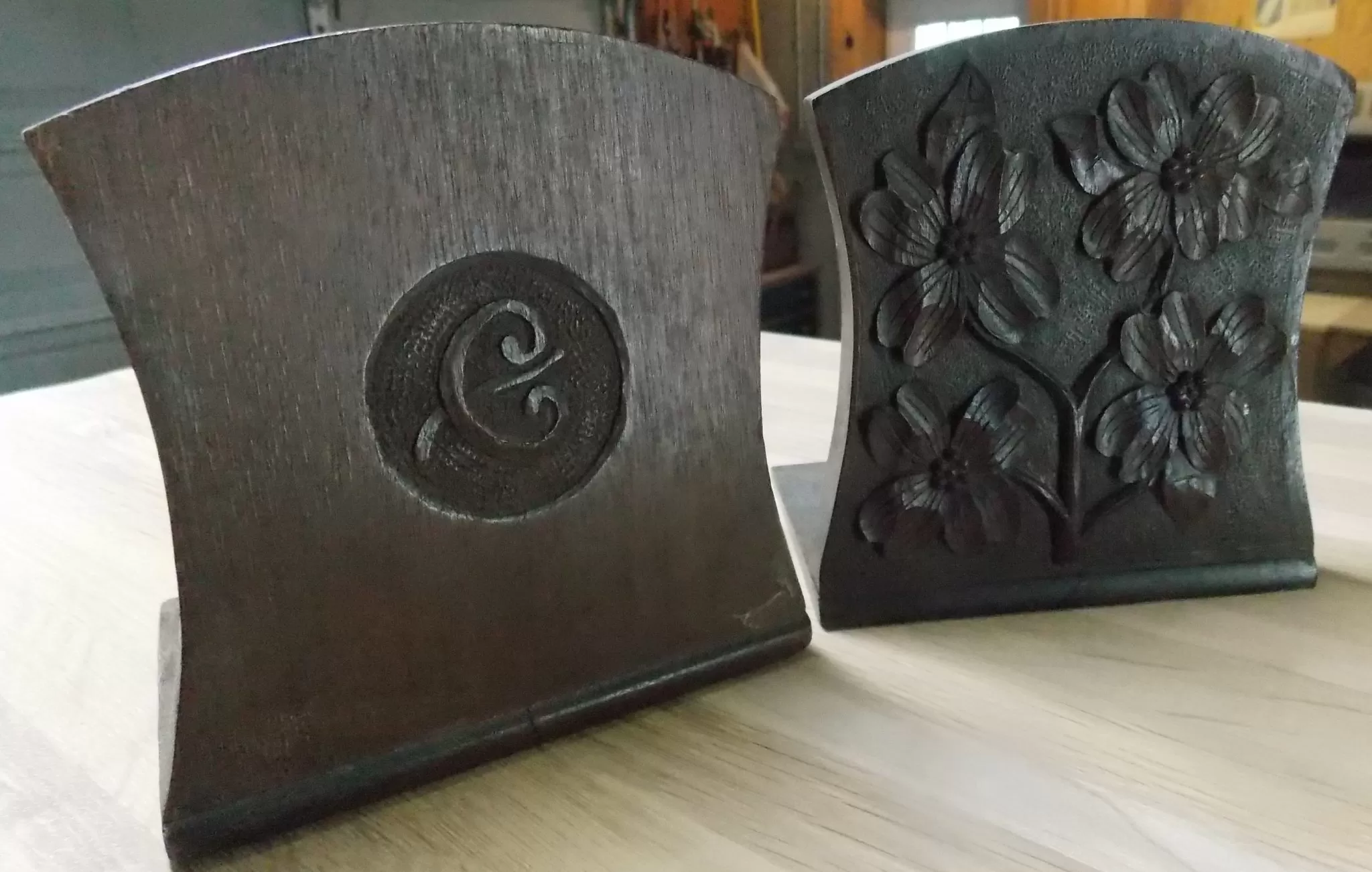
Regardless of the form, when evaluating any item bearing either of the Biltmore Industries branded marks, play close attention to the carving. Nearly all of the carving designs were drawn by Eleanor Vance, so the difference will not be so much in the design as it will in the skill level of the carver. Collectors place a premium on those items with deep, perfectly executed carvings that have survived in near-mint condition.
Good Luck!
Bruce Johnson
